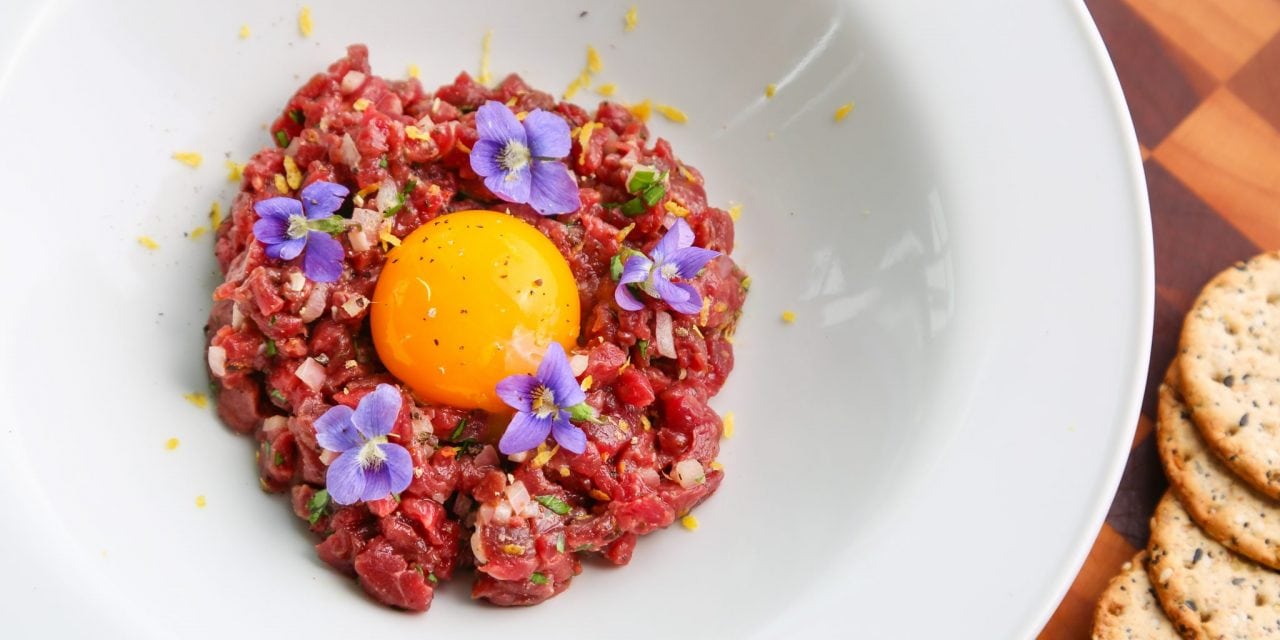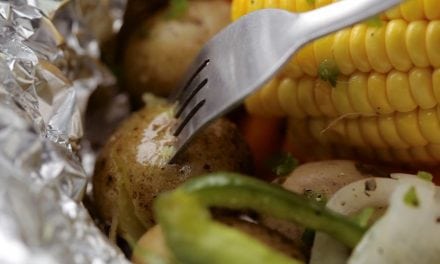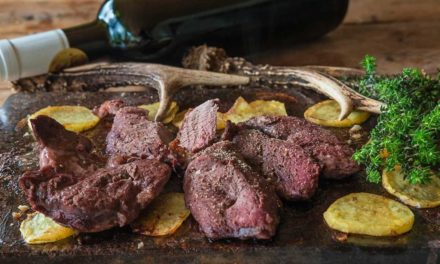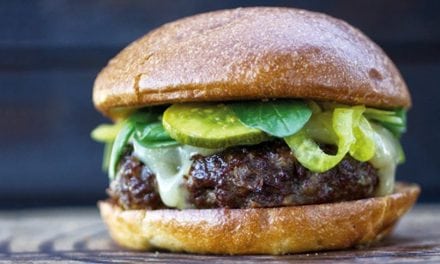Story and photos by Ryan Sparks
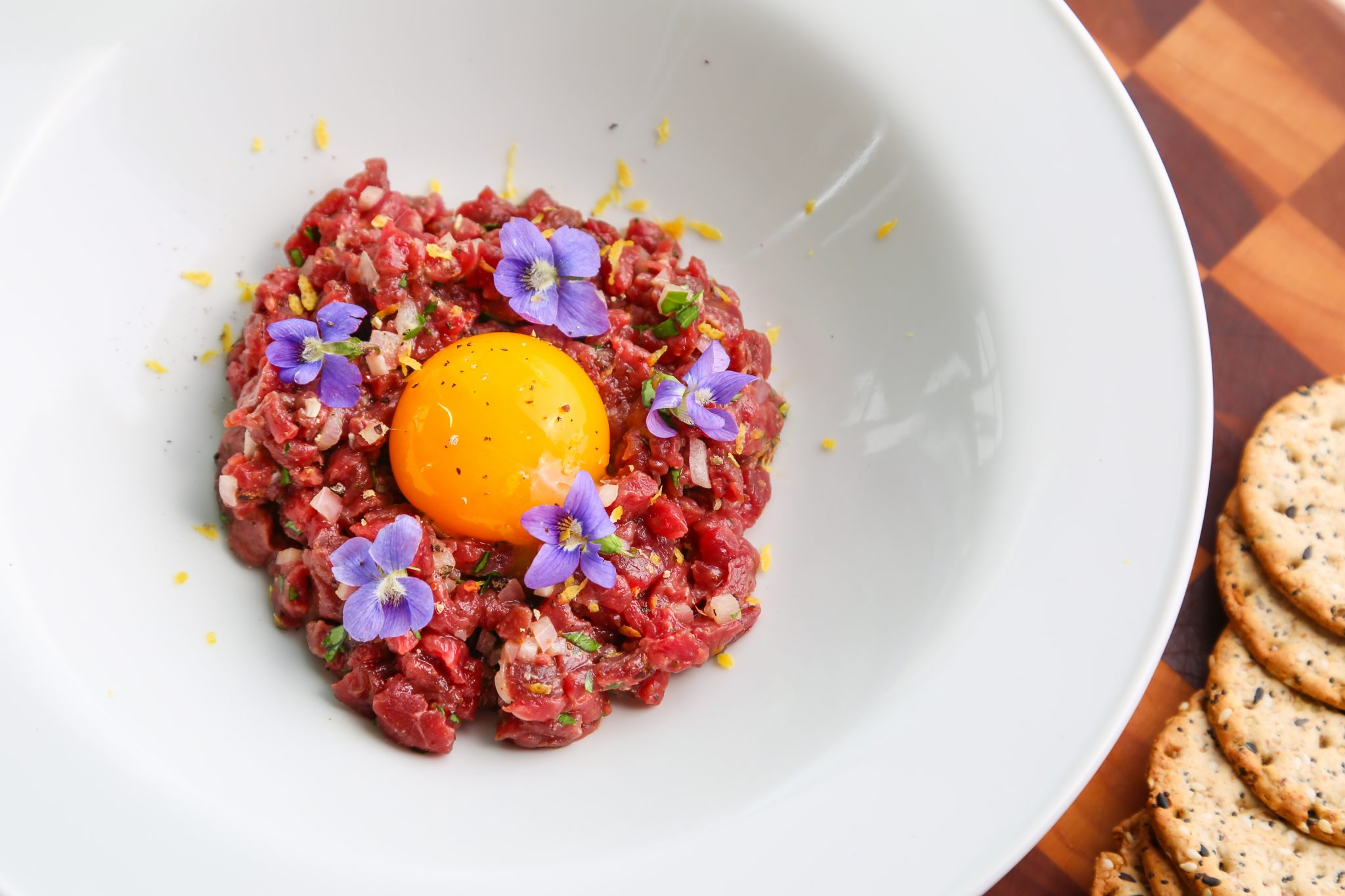
Photo by Jenny Nguyen-Wheatley
The first cool days of autumn bring a nagging urge to be outdoors – a primal upwelling to hear the crunch of leaves underfoot, stare up at migrating flocks and breathe the sweet smell of harvest. Every fall I look forward to days spent hunting deer and quail, Cornhusker football games, trips to the pumpkin patch and rich meals of wild game. Like many Nebraskans who also love wild game, I often look for inspiration from Jenny Nguyen-Wheatley, who is our third “Nebraska Table” feature in this four-season series. Jenny’s culinary talents frequently grace the pages of NEBRASKAland, but I followed her work long before her time at the magazine through her website, foodforhunters.com. As a college student, I remember looking for wild game recipes outside the “wrap-in-bacon and smother-with cheese” category. Her recipes taught me preparations and techniques I still use today. Having learned so much from Jenny, it was a pleasure to interview her and learn her thoughts on hunting and cooking wild game.
How did you become interested in hunting and cooking wild game?
My husband, Rick, introduced me to wild game years ago when we first met in California. He hunted in Nebraska every year and would usually fly home with a deer or two every season and some ducks as well – whatever his cousins could send with him. He did all the typical recipes: Manwiches, burgers, wrap-it-in-bacon steaks … When I discovered his freezer full of game, all that changed.
I was still in college at the time and that’s what I did during my spare time – I taught myself how to cook with wild game. We cooked on the weekends together when I was home, and during the week, I’d take some meat with me and experiment at my apartment near UCLA. We created our Food for Hunters website to chronicle our experiments. The Daily Bruin, the university newspaper, even wrote a story on me. One of their journalists sat behind me in class and saw that I was working on the website instead of – ahem – paying attention. The paper contacted me, and I invited them over for dinner to have venison steaks with boysenberry sauce and blue cheese. They loved it, and the evening provided them with a unique story. Hunting is a completely foreign concept to most people in the big city.

How did you learn to hunt and cook? What would you say to someone interested in learning to hunt?
Just do it. People get so worked up about cooking because they’re afraid of messing up. Screwing up a recipe is little loss. If you burn dinner, there are grocery stores and restaurants to remedy that. Then try again later. To me, cooking is a creative outlet. Some recipes work out and others don’t. It’s not a big deal. As far as where to start, check out my book Hunting for Food for instructions and tips on hunting a wide variety of game. There are also some great websites out there dedicated to wild game cooking: Hank Shaw’s Hunter Angler Gardener Cook blog was a great resource when I was learning how to cook game.
What are the advantages of hunting your own food?
As long as you don’t overdo the butter, oil and cream cheese, wild game is healthier than store-bought meat. It’s lean. The animal also lived a free-range, natural life. And depending on your situation, if you have easy access to hunting near your home, it can be cheaper to fill your freezer. On top of that, since you’re doing the dispatching, cleaning and butchering yourself, you have complete control over the whole process. I see the meme “Wild game doesn’t get recalled” circulate on Facebook every hunting season. It’s true.
What is your favorite animal to hunt and cook with?
Deer and elk are versatile. They can substitute beef in virtually all recipes, taking into account differences in cooking time. And if you shoot a young animal and take care of it in the field, most people can’t tell the difference.
What are types of preparations that many hunters overlook?
There are many hunters who think that certain parts of an animal are inedible. Anything can be edible as long as you take the time to cook it correctly. Some of my favorite recipes were made from the quarters and legs of an animal, rather than the loins and breasts. I’ve taken bone-in-shanks from a deer and braised them until they almost fall off the bone to make Italian osso buco and also Persian-style braised venison shank. The bones can be used to make broth and if you can crosscut them, deer marrow is very good. I’ve also made all kinds of soups with the legs of game birds. And wild turkey legs, when ground, make delicious, healthy burgers and meatballs, but remember to take out the pin bones.
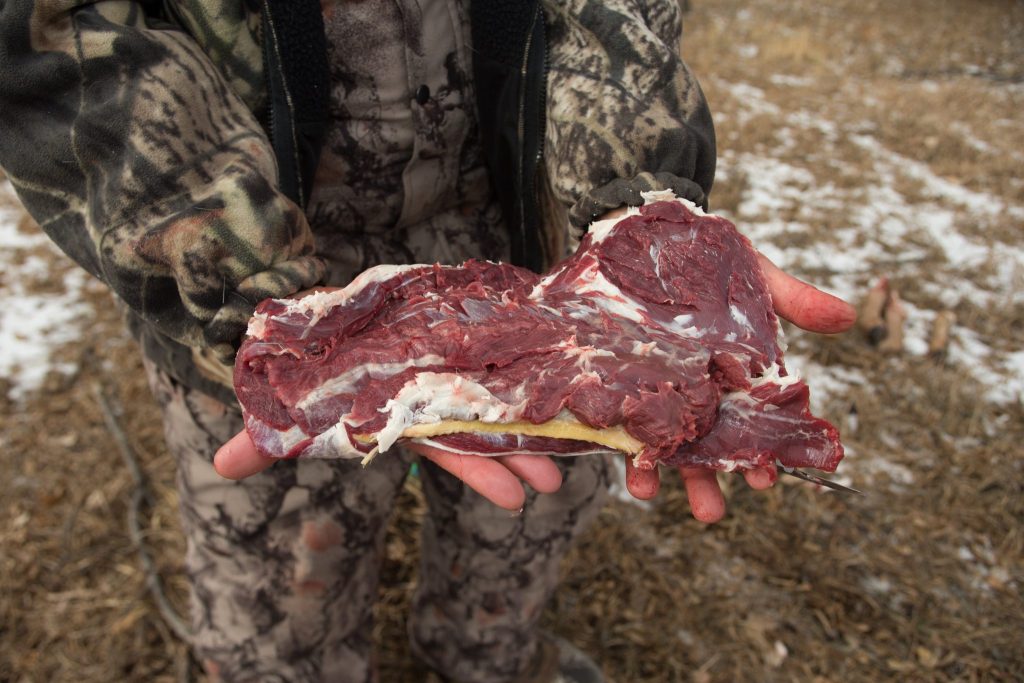
What is the biggest misconception about hunting and eating wild game?
I think most people’s perception of hunting and wild game is changing. If given the opportunity, I think most people are fascinated by it. I’ve spent a lot of time talking about wild game with different groups in the last few years, and rarely do I meet someone who will completely turn up their nose. Different people can have different opinions about trophy hunting and all that, but food and cooking is a common experience. People love to eat and try new things, more so now in this Instagram era. In my experience, cooking wild game has been a great way to open up bigger conversations about hunting.
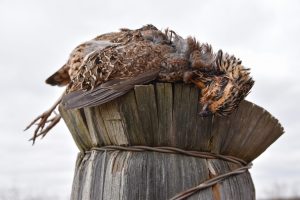
And it’s all about presentation, as my mother – who is an amazing cook – taught me. If your food, plating and photos look good, you’ll win people over. Wild game doesn’t always have to be wrapped in bacon or drowned in canned brown sauce, which has its place, but as a food photographer and recipe developer, my goal is to convince as many people as I can that eating and cooking wild game is a worthwhile experience. I do this by cooking game in as many ways as I can think of so that different people can connect with it.
What I do find interesting is how wild game is perceived in different countries. For example, eating game is so often considered “redneck” or “backwoods” in the United States. But across the pond in the U.K., a wild game dinner is an elevated experience. Hunting is the sport of gentry in Britain, whereas here, it is the sport of the common man, and it’s interesting how that is reflected in the food.
Rick and I visited Scotland in June, and we ate as much local game and seafood as we could find: red deer that was hunted on a nearby estate; wild salmon, cod, haddock, hake and lobster caught off the Scottish coast; and fresh scallops and oysters harvested the same morning from a local saltwater bay loch … we even came home with a few new recipes to try. I can’t think of a better way to truly experience – take in a new place – than to consume an animal that spent its life living and breathing in that space, eating the grass that grew wild on its native soil, and drinking from the streams that bubbled from deep underneath that same earth. That animal is an embodiment of its environment, and the connection of being able to hunt and prepare a meal with its meat is magical. You just don’t get that experience with factory meat.
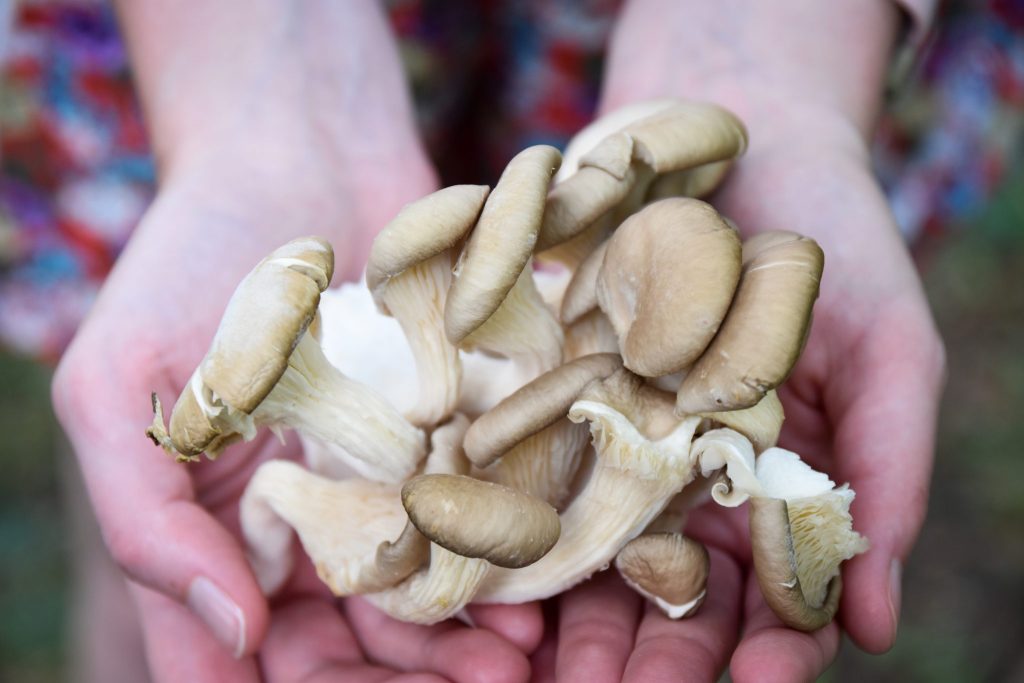
How has your experience hunting, fishing, and cooking wild game in Nebraska influenced your perception or understanding of the state?
It’s made me appreciate the state’s bounty, and how important conservation is in maintaining this bounty. I come from Southern California, where their idea of “conservation” is more hands off and fairly anti-hunting, all the while turning a blind eye to how much urban development and our very existence affects wildlife. Speaking from personal experience – when you spend your whole life living among buildings and concrete, your idea of the countryside, of the forest, and all the creatures that live in it are more fantasy than reality. This realization has changed the way I look at our wild places, and I have hunting to thank for it. Rick and I would’ve never been able to sustain Food for Hunters back in SoCal. Living in Nebraska now, we always have a freezer full of game.
I’m thankful for all our biologists who are so passionate in what they do, all the like-minded hunters and anglers who buy their hunting and fishing permits every year to support conservation, and our Nebraska landowners who are stewards of the earth and water upon which our wildlife depend.
You will find Jenny’s recipe for venison steak tartare in the following recipes. To me, this is the essence of venison in its purest form. Don’t be intimidated – as someone who has used the recipe, I can assure you it’s easy to prepare and unbelievably delicious. You will also find a recipe for foraged oyster mushroom tacos by former executive chef at Lincoln’s Hub Café Abigael Birrel, candied garden squash rings by my grandmother and lifelong cook Jane Sparks, and Sander’s Farm bobwhite quail by chef and owner of The Grey Plume in Omaha Clayton Chapman. I hope these recipes inspire you to get outside and explore Nebraska’s autumn flavors. ■
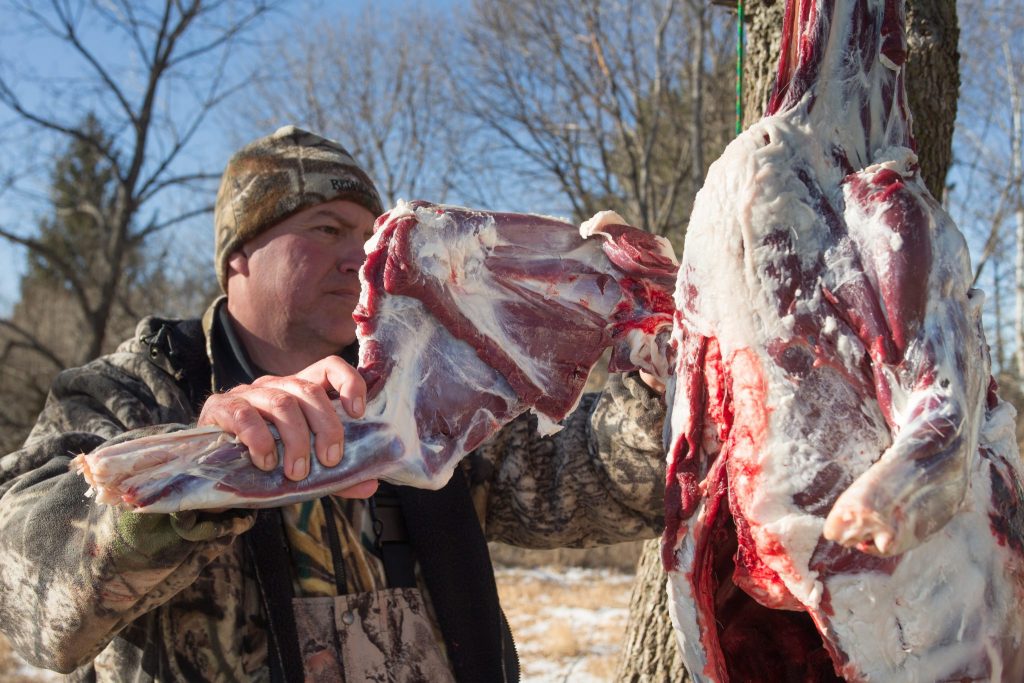
Venison Steak Tartare
Yield: 4 appetizers
• ½ pound venison loin or roast (never inside straps)
• Kosher salt
• Half a shallot, minced
• 2 tablespoons red wine vinegar
• ½ teaspoon juniper berries, toasted and ground
• Himalayan sea salt, to taste
• Coarse ground pepper, to taste
• Fresh parsley, chopped and to taste
• 1 teaspoon Dijon mustard
• 1 teaspoon Worcestershire sauce
• Grated zest of half a lemon
• Woodland violet flowers for garnish, optional
• 2 egg yolks, from a reliable source
• Capers
• French bread, sliced, buttered and toasted
Trim off any silver skin and fat on venison. Cover liberally with the kosher salt and set in the freezer for 20-30 minutes to firm up. Meanwhile, soak minced shallot in red wine vinegar. Wash your hands thoroughly before handling the meat. When venison is firm, rinse salt off the venison and pat dry with paper towels. With a sharp knife, finely dice the meat. Transfer meat to a bowl and keep cold. (Never use tenderloin/inside straps for this recipe due to possible contamination from the gut.)
Drain shallots and combine with minced meat, ground juniper berries, Himalayan sea salt to taste, coarse ground pepper, chopped parsley, Dijon mustard and Worcestershire sauce. Taste for seasoning.
Divide meat into two serving bowls and make a depression in each. Lay an egg yolk into each bowl and garnish with lemon zest – edible flowers are purely decorative. Serve with capers and thinly sliced, buttered, toasted French bread. Try this dish with sliced/diced avocados.
– Jenny Nguyen-Wheatley
Foraged Oyster Mushroom Tacos
Oyster mushrooms grow wild in Nebraska. You can also buy them from a grocery store, but the wild variety has a much fuller flavor. Oyster mushrooms grow in clusters on living and dead trees, stumps, logs and buried roots. They can be found in great quantity September through October.

Yield: 2-4
• 4 tablespoons olive oil
• 1 tablespoon smoked paprika
• 1 teaspoon ground coriander
• ½ teaspoon ground cumin
• Pinch of red pepper flakes
• Salt and pepper
• 1 cup thinly sliced yellow onion
• 1 large poblano chile, thinly sliced
• 1 clove garlic, minced
• 6 ounces oyster mushrooms, thinly sliced
• 2 teaspoons freshly squeezed lime juice
• 8 soft corn tortillas
• ½ cup chopped fresh cilantro, for garnish
• 1 thinly sliced avocado
Heat the olive oil in a large skillet over medium heat. Add the onion and poblano, and sauté until the onion is tender and a bit golden, about 15 minutes. Add the garlic and spices and sauté for another minute. Stir in the mushrooms, then season with salt and pepper. Cook until the mushrooms are tender and crispy (5 to 8 minutes). Remove from the heat and stir in the lime juice. Taste and adjust the seasonings as desired.
In a small skillet, heat corn tortillas until fragrant and pliable. To assemble, layer the onion, poblano and mushroom mixture in each tortilla. Garnish with thinly sliced avocado and cilantro.
– Abigael Birrell
Candied Garden Squash Rings
Simple and sweet, candied acorn squash pairs exceptionally well with traditional holiday fixings like gravy, cranberry sauce and roast turkey. Feel free to substitute the brown sugar mixture with honey or maple syrup.
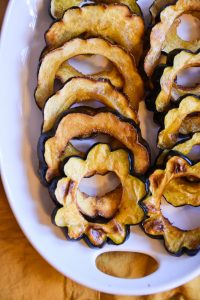
Yield: 4 sides
• 2 acorn squash
• Salt and pepper to taste
• ½ cup packed brown sugar
• ¼ butter or margarine
• 2 tablespoons water
Preheat oven to 350 degrees. Cut squash lengthwise into 1-inch slices, discarding the seeds. Arrange the slices in a single layer in a shallow baking dish. Season with salt and pepper. Cover and bake until almost tender, about 40 minutes. In a saucepan combine the brown sugar, butter and water. Cook over medium heat until bubbling. Spoon the brown sugar mixture over the squash and continue baking, uncovered, until the squash is tender and the sugar has caramelized, about 15 minutes. Enjoy!
– Jane Sparks
Sander’s Farm Bobwhite Quail
To me, quail is the perfect fall bird. It is versatile, stands up well to winter spices, and is able to take on many of the flavors you pair it with. For our ingredients, Dave and Lori Sanders own Sander’s Country Meats, just east of Lincoln, and they raise quail, rabbits, and bees, and cure a wide variety of local meats for chefs in the area. The bobwhite species in this recipe is the quail indigenous to Nebraska and we felt a perfect fit for the fall. In addition, Small’s Fruit Farm is in Mondamin, Iowa, overlooking the Missouri River Valley. Jim Small and his family have been growing fruit on this land for decades and specialize in apples. We did not use a specific type of apple for this recipe because we felt any local apple would work. Also, Shadowbrook Farm, just east of Lincoln, is a breath of fresh air for us during the late fall and winter months as produce becomes scarce in our harsh winters. Last, the coffee represented in this dish comes from Sumatra, Indonesia. We bring all of our Fair-Trade Organic coffee into the restaurant raw and roast here on site. We thought this was a great way to bridge the end of summer and fall flavors. The recipe serves four, but is easily adjustable for more or fewer guests. Enjoy!
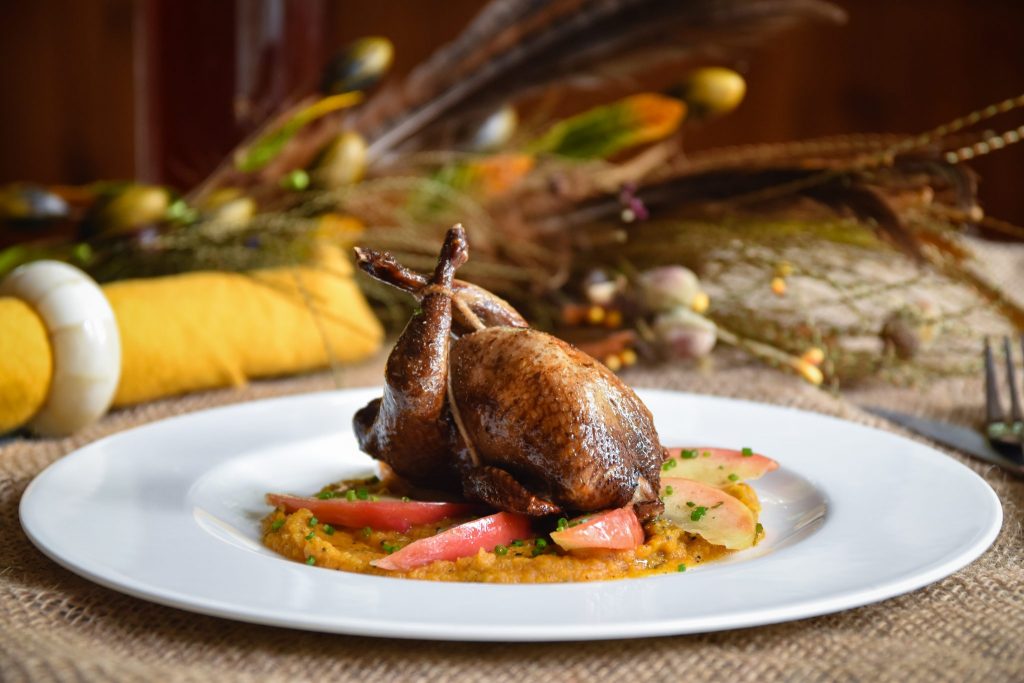
Yield: 4
• 4 bobwhite quail
• 8 sprigs fresh thyme
• 4 cups pre-made coffee, can still be warm
• 2 oz fresh ground coffee, finely ground
• 3 oz neutral cooking oil
• 3 oz whole unsalted butter
• Kosher salt and black pepper to taste
• .5 oz George Paul red wine vinegar
• .5 oz Sander’s Farm dark honey-
• 1 lemon for zest
Place whole quail in a container large enough to hold them. Pour pre-made coffee over the quail and allow to sit for as long as possible. You can let the quail set for a minimum of an hour or up to 24.
Once the quail have marinated to your desired amount of time, pull the quail out of the coffee and pat them dry. You can save the coffee marinating liquid for the sauce. Season the quail with salt, pepper and ground coffee. Heat a medium size pan over medium heat, add the cooking oil. Once oil is hot, add the quail to the pan and begin to sear them until they become golden brown. Once one side of the bird is golden brown, continue to rotate the quail until all sides are browned evenly. Once quail are browned, place them on a baking sheet, add one thyme sprig on top of each bird and bake in the oven at 350 degrees until the internal temperature of the thigh reaches 160 degrees.
In the pan that you seared the quail in, add the 3 oz of butter and 4 thyme sprigs. Once butter is hot, add the coffee marinating liquid to the pan and reduce until the sauce is thick like ketchup or coats the back of a spoon. Add vinegar and honey, remove the thyme sprigs and season with salt and pepper, set aside. Once the birds come out of the oven, brush them with the sauce and sprinkle with the lemon zest before you serve. You can also put a little sauce on the plate if you like.
Small’s Fruit Farm Fall Apple
• 2 apples
• 1 oz George Paul white wine vinegar
• 1 oz Sander’s Farm dark honey
• 2 oz whole unsalted butter
• Kosher salt and fresh cracked black pepper to taste
• .25 oz fresh chives or parsley, minced
Wash apples and cut into quarters, leaving skin on. Remove the core of the apple and cut the apple into wedges about .25-inch thick. In a saute pan, add your butter and allow the butter to foam. Once butter is foamed, add your apples and cook until they are crisp on the outside and tender on the inside. Add the honey and vinegar and season to taste with salt and pepper. When you are ready to serve the apples, add the chives or parsley.
Shadowbrook Farm’s Butternut Squash
• 1 large or two small butternut squash
• .25 oz fresh cinnamon, toast and ground
• 2 oz Sander’s Farm dark honey
• .25 oz coffee grounds, finely ground
• 3 fresh thyme sprigs
• 3 oz neutral cooking oil
• 2 oz whole unsalted butter
• Kosher salt and fresh cracked black pepper to taste
Cut the bulb of the butter nut away from the neck. Scrap the seeds out of the bulb and peel the neck of the butternut. Cut the neck down the middle lengthwise and then cut into .25-inch slices. Sprinkle the inside of the bulb with the coffee grounds, cinnamon, 1 oz of butter in each, salt and pepper. Wrap the bulbs in aluminum foil and bake in a 350 degree oven until they are completely tender; this should take about 1-1.5 hours.
Using the neck of the butternut, add them and the cooking oil to a sauté pan or sauce pot on medium heat. Season with salt and pepper and cook until tender. If the squash starts to develop any color, you can add little bits of water in stages to help the cooking process. The goal is to have very tender squash without any browning.
Once both types of squash are cooked, scrape the flesh out of the bulb of the butternut and mix with the softened sautéed neck. Make sure you put the butter and liquid from the roasted squash into the puree as well, discard the thyme sprigs. If you would like a very smooth puree of butternut, put this mixture into the blender with the honey and blend until smooth. If you would like the squash more rustic, mash with a fork in a mixing bowl and mix in the honey. Season to taste with salt and pepper.
To assemble, divide the butternut squash mash/puree among your four plates evenly. Spoon apples on top and place one quail on top of the apples. If you have any of the coffee sauce left, you can put some on the plate.
– Clayton Chapman
The post The Nebraska Table: Autumn Recipes appeared first on NEBRASKALand Magazine.

